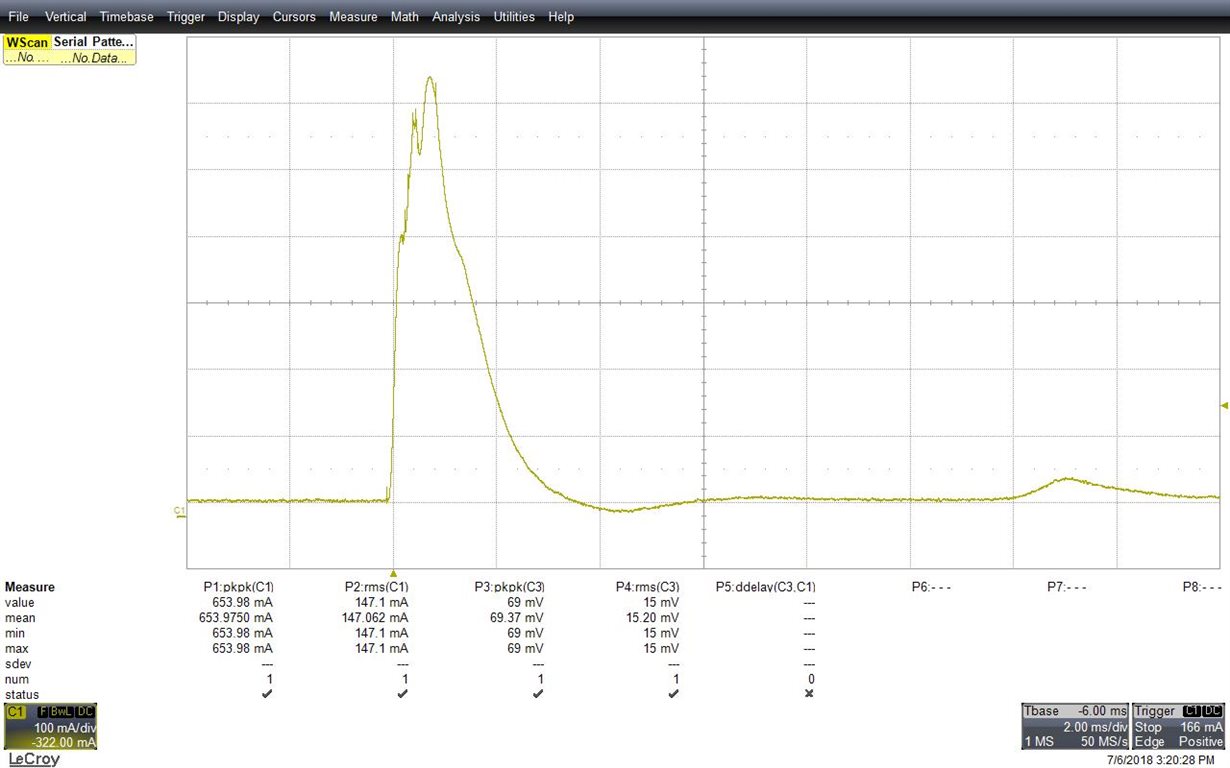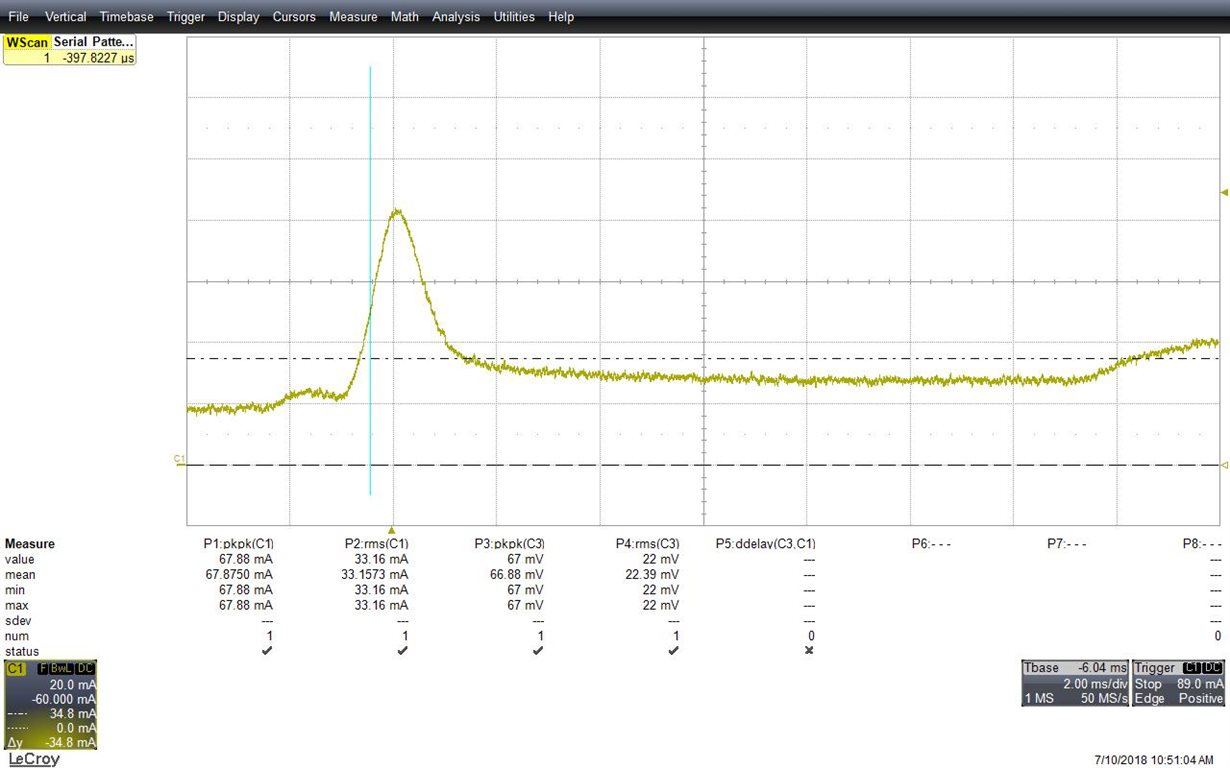Dear Sir/Madam,
I am looking at the following issues that might affect the increase in current measurement but I would like to be certain we are going at the correct path.
- The INA196A datasheet requirement 0.1uF decoupling capacitor. Without this what will be the effect at the INA196A output? Will this reflect the noise at the INA196A OUT?
- Battery relay/ open close current inrush current during relay on. Datasheet of INA196A at VIN+ is 5mA only. Measured inrush current can surge up to 600mA. Will this damage the component?
- Use of transzorb in some of TI Current sense applications? will this advisible?
Here is my test result, you can see the current failures are above the test limits and within the TI spec.
Hope to hear from you soon.
Best regards,
kpk



